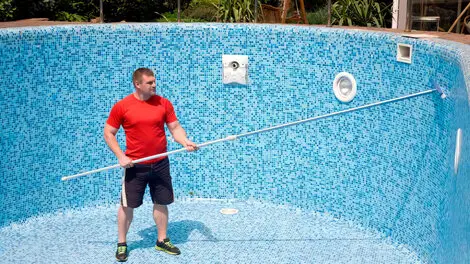Are you ready to choose the perfect swimming pool tiles? Today we will explore everything you need to know about selecting, installing, and maintaining swimming pool tiles. Whether building a new pool or renovating an existing one, choosing suitable pool tiles is crucial for aesthetics and functionality.
You can achieve safe and aesthetically pleasing results by selecting the right pool tiles and creating a swimming pool with unique designs.
Join us as we cover various topics such as materials, tile sizes and styles, how you can install tiles, cleaning and regular maintenance, design ideas, and more. So, if you are ready to revamp or install your own pool, let us help you with this guide!
Types of Pool Tiles: Materials And Styles
Many pool owners need help finding the perfect tile for their swimming pool. There is a wide range of materials, styles and different tiles. Each material has its own unique characteristics, advantages, and disadvantages. Let’s explore the most popular options:
Ceramic Tiles
Ceramic tiles are a common choice for swimming pools due to their durability and versatility. They are available in various shapes, sizes, and colours, allowing you to create stunning designs.
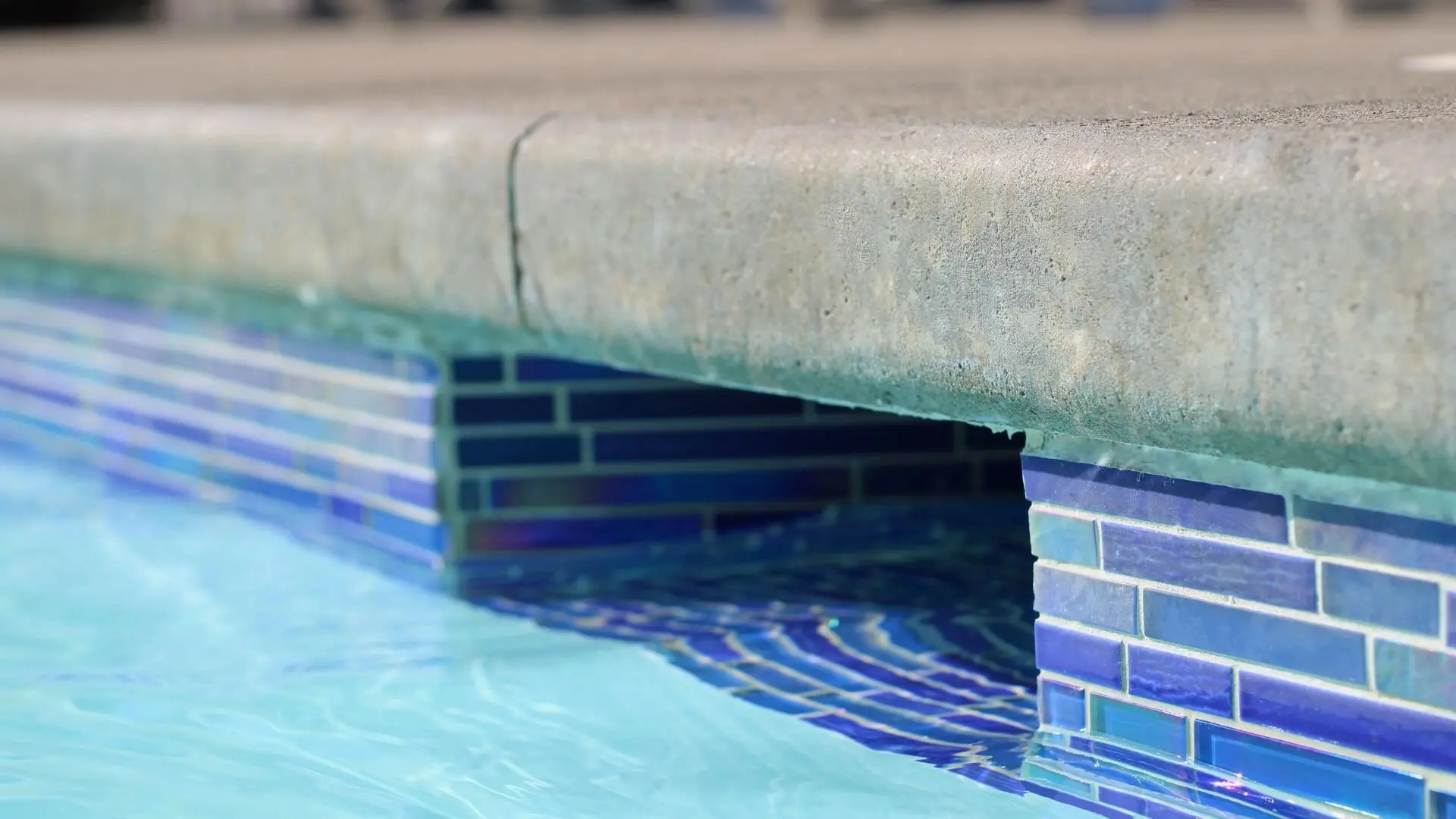
Glass Pool Tiles
If you’re looking for a luxurious and elegant option, glass tiles are an excellent choice. They offer a stunning visual effect as they reflect light, creating a sparkling effect in the water.
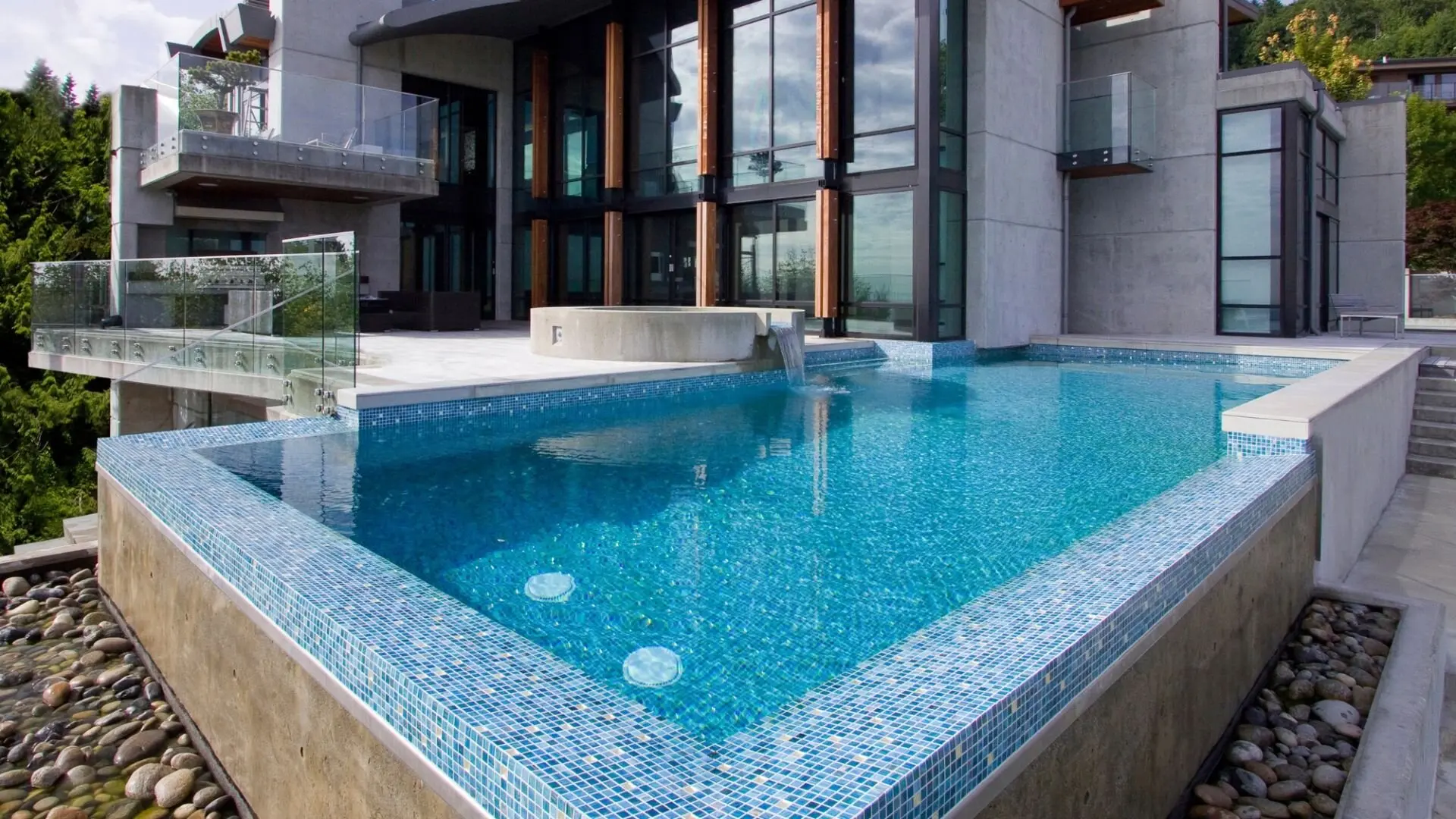
Porcelain Tiles
Porcelain tiles are known for their strength and resistance to water absorption. They are highly durable and come in various colours and textures, making them suitable for indoor and outdoor pools.
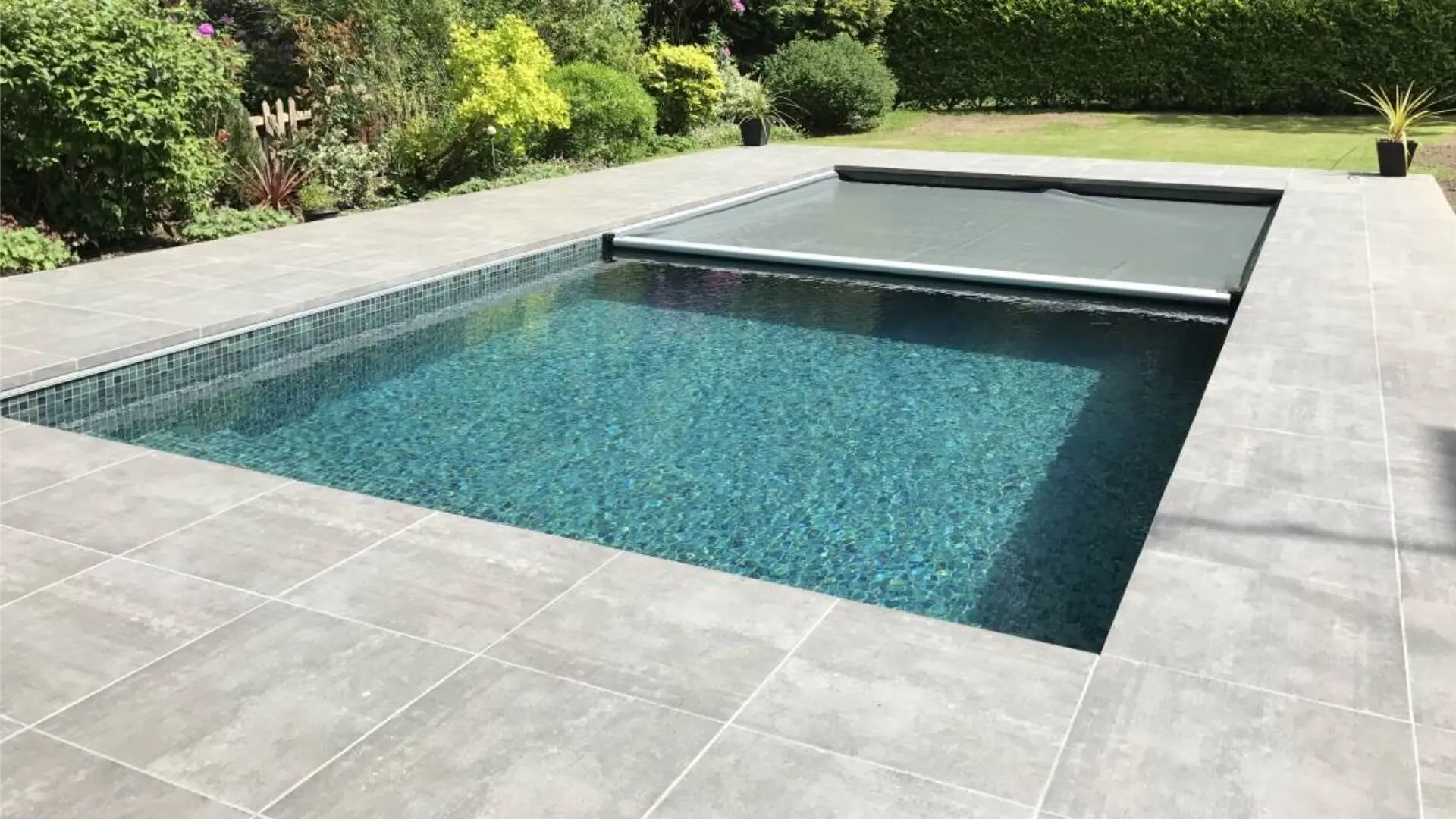
Natural Stone Tiles
Natural stone tiles such as travertine, slate, or limestone can add a touch of elegance to your pool for a more organic and natural look. These tiles are available in various finishes and can withstand outdoor elements.
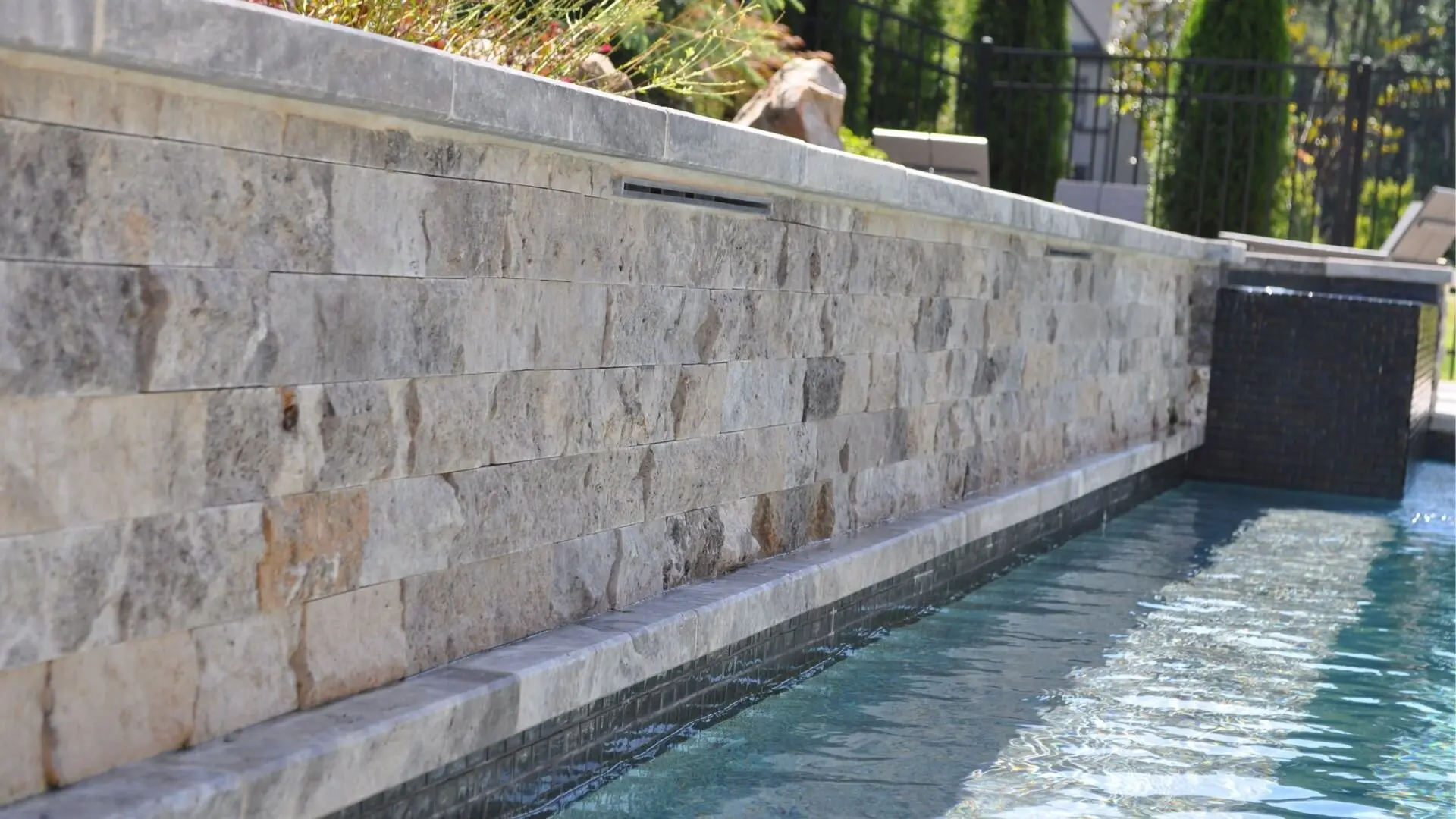
Choosing The Right Pool Tiles For Your Swimming Pool
Selecting the right pool tiles involves considering a few key factors to ensure you make the best choice for your pool. Here are some important considerations:
How Durable Are The Pool Tiles?
Since pool tiles are exposed to water, chemicals, and changing weather conditions, choosing durable tiles that can withstand these elements is essential.
Are They Slip Resistant?
Safety is paramount, especially in pool areas and your swimming pool deck. Choose pool tiling that offers slip resistance to reduce the risk of accidents.
How Do They Look?
Your pool tiles contribute significantly to the overall visual appeal of your swimming pool. Consider the tiles’ style, colour, and design to create a beautiful and cohesive look.
What Is Required For Maintenance?
Different tile materials require varying levels of maintenance. Choose tiles that align with your maintenance preferences and capabilities.
Installation Tips For Pool Tiles
Installing pool tiles requires attention to detail and proper techniques to ensure a successful and long-lasting result. Here are some essential tips to consider:
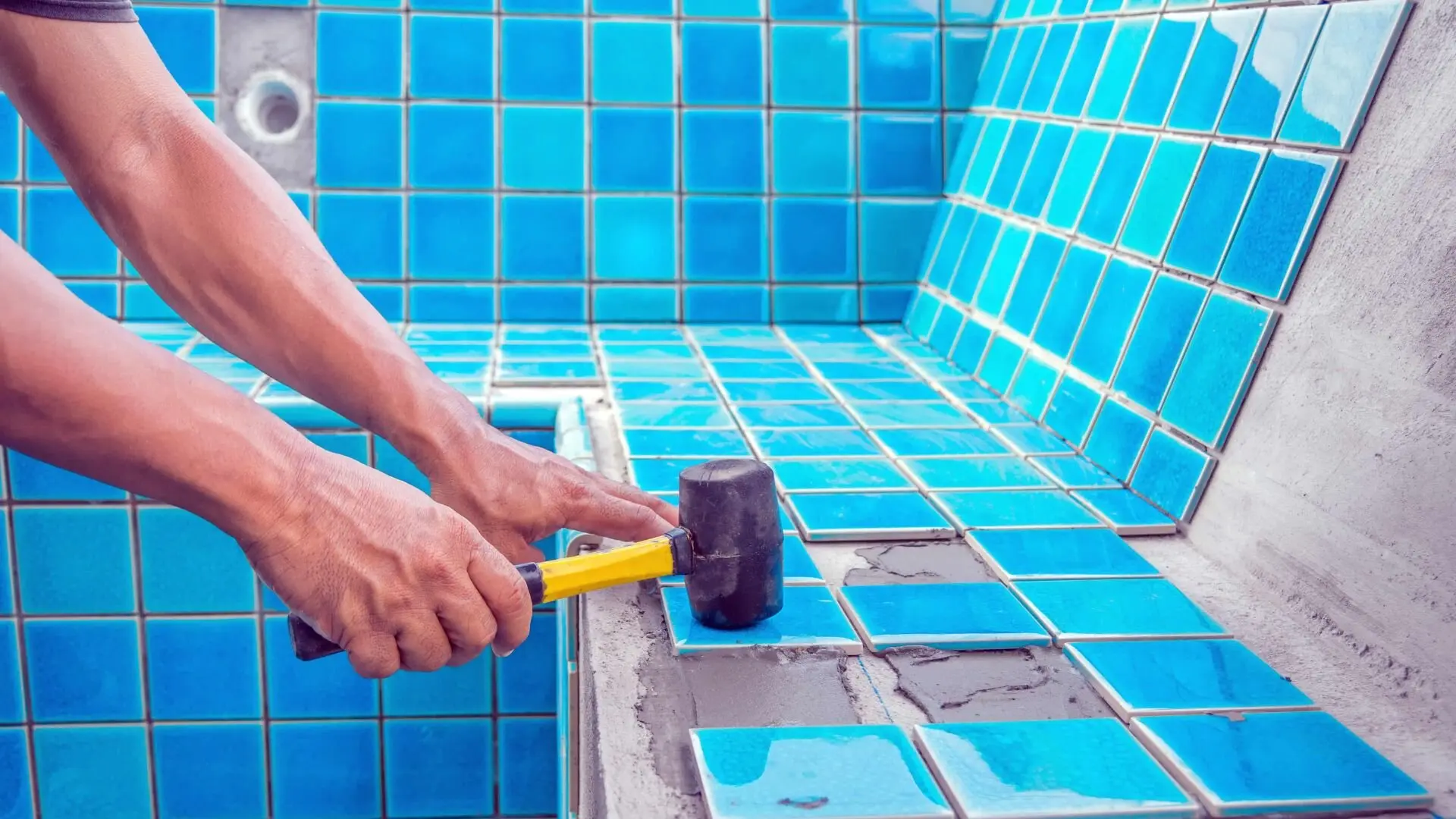
Tip 1: Surface Preparation
Before installing the outdoor tiles, ensure the pool’s surface is clean, smooth, and adequately prepared. This may involve levelling the surface, removing debris or old tiles, and repairing cracks.
Tip 2: Adhesive Selection
Use a high-quality adhesive designed for pool tile installations. Follow the manufacturer’s instructions for application and drying times.
Tip 3: Tile Layout
Plan the tiles’ layout carefully, considering the pool’s shape, size, and any design elements you wish to incorporate. Consider the tile size, such as using smaller tiles for curved or intricate areas to ensure a seamless fit.
Tip 4: Grouting
After the tiles are installed, apply grout to fill the gaps between the tiles. Choose a grout that is water-resistant and suitable for pool environments. Properly seal the grout to prevent water penetration.
Cleaning And Maintenance Of Pool Tiles
We all know pool maintenance is important. But did you know that maintaining your tiles is just as important? Regular cleaning and maintenance are essential to keep your pool tiles looking their best and maintain their longevity. Here are some tips to help you:
Use a non-abrasive cleaner formulated for swimming pools to remove stains. Follow the manufacturer’s instructions. For stubborn stains, consider using a pumice stone or calcium deposit remover.
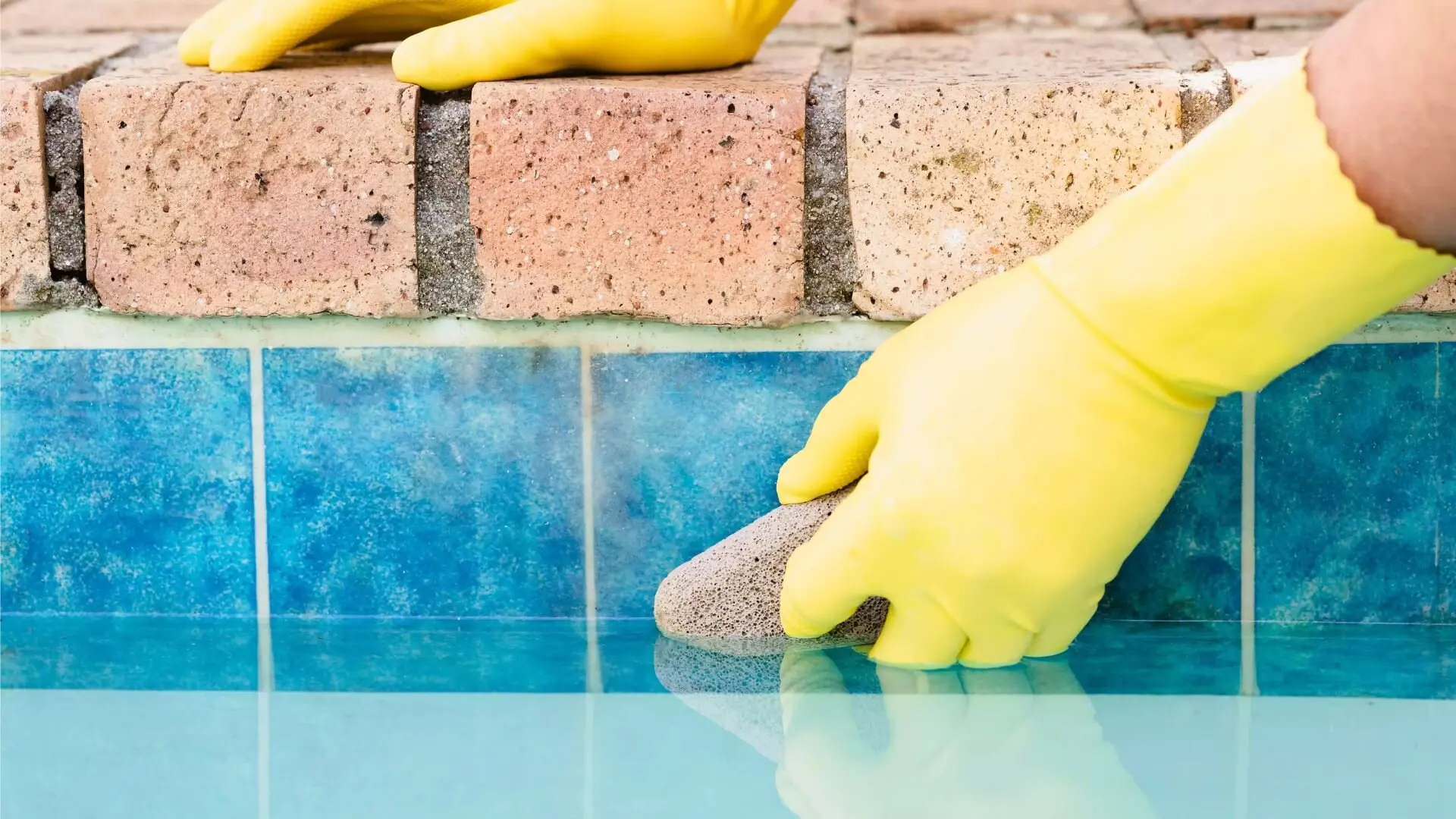
You can prevent algae growth by regularly brushing the tiles and using suitable algaecides. Maintain proper water chemistry and filtration to discourage algae growth. Also, ensure you manage mineral deposits using a product like calcium silicate, especially if your pool’s water source contributes to deposit build-up.
Select cleaning products that are safe for your tile material. Avoid abrasive cleaners or tools that can damage the tiles. Instead, choose products designed specifically for pool tile maintenance and follow usage instructions.
Enhancing Pool Design With Creative Tile Ideas
Looking to elevate your pool design? Get inspired with these creative ideas for pool tiles:
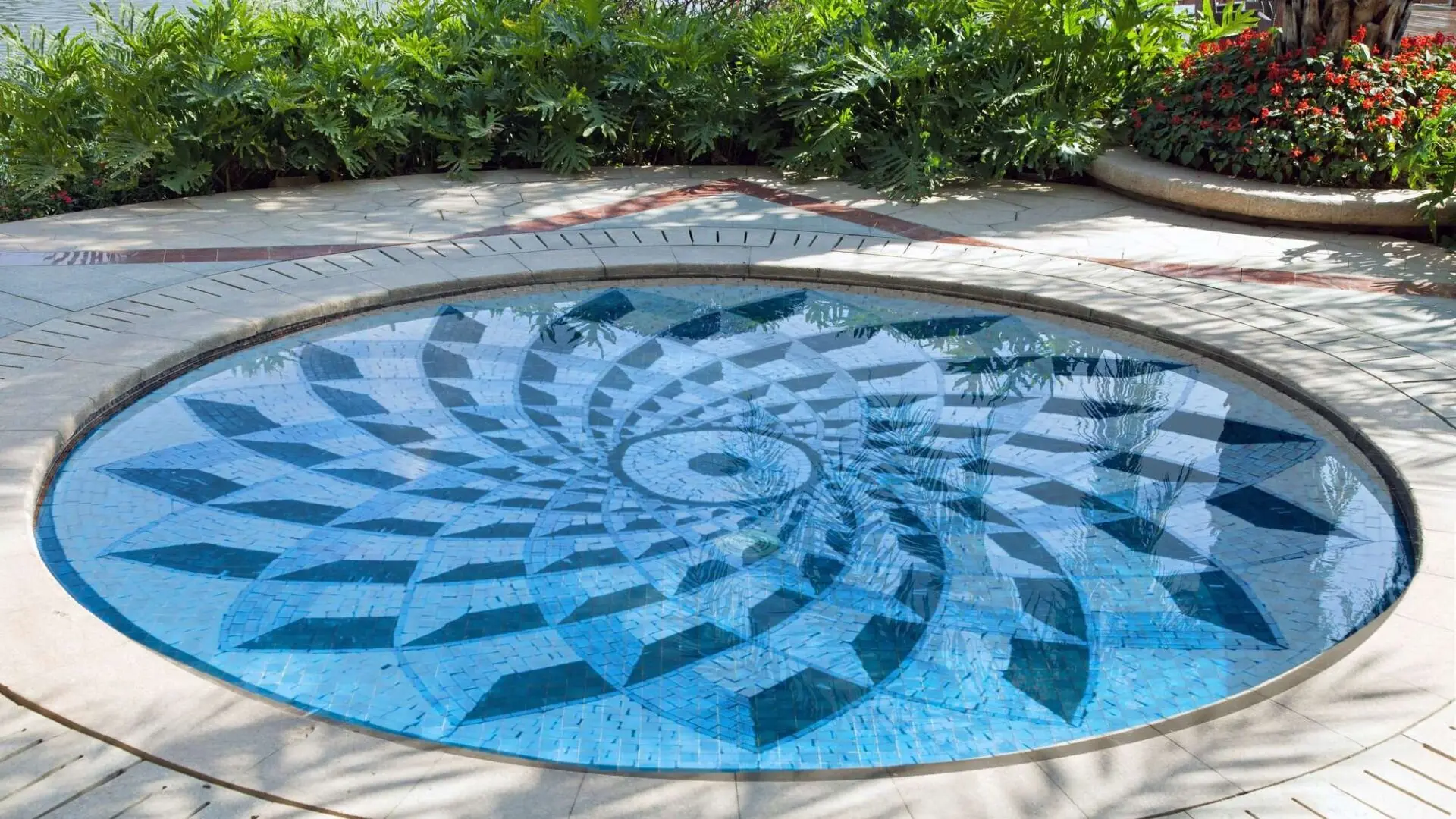
Mosaic Tiles
Incorporate mosaic patterns and designs to create eye-catching focal points or decorative borders. Mosaic tiles allow you to unleash creativity and add a unique touch to your pool’s design.
Colour Combinations
Experiment with different colours to create visually stunning effects. Consider using blue tiles to evoke a serene and inviting atmosphere, or mix and match various colours to suit your preferences.
Tile Arrangements
Play with tile arrangements to create interesting geometric or organic patterns. From herringbone to chevron, the possibilities are endless.
Pros And Cons Of Different Pool Tile Materials
Each pool tile material has its own set of advantages and disadvantages. Here’s an objective analysis of the most common materials:
Ceramic Tiles
- Pros: Affordable, versatile, and available in various colours and designs.
- Cons: Prone to chipping and fading over time.
Glass Pool Tiles
- Pros: Luxurious appearance, reflective properties, and excellent durability.
- Cons: Higher cost compared to other materials and may require professional installation.
Porcelain Tiles
- Pros: Highly durable, water-resistant, and low maintenance.
- Cons: Relatively higher cost and limited colour options than ceramic or glass tiles.
Natural Stone Tiles
- Pros: Natural beauty, unique patterns, and excellent durability.
- Cons: Higher cost, may require regular sealing and can be more challenging to install.
Current Pool Tile Trends And Popular Designs
Stay up-to-date with the latest pool tile trends and get inspired by popular designs:
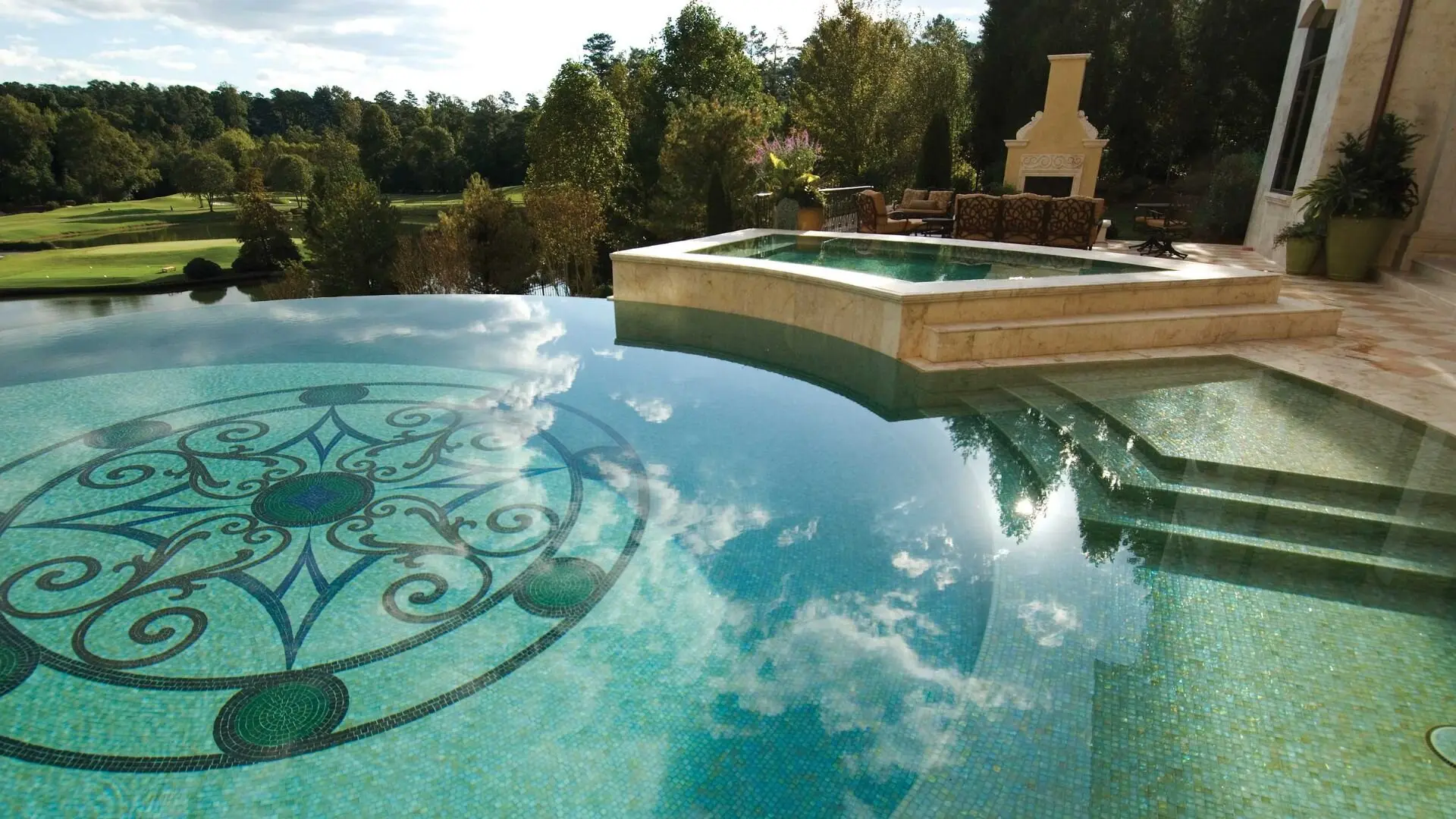
Geometric Patterns
Embrace clean lines and geometric shapes to create a modern and contemporary look. Hexagons, diamonds, and triangles are popular choices.
Nature-Inspired Tiles
Bring the outdoors into your pool area with tiles that mimic natural elements like wood, stone, or pebbles. These designs create a harmonious blend between your pool and its surroundings.
Bold Colours
Make a statement with vibrant and bold-coloured tiles. Shades of blue, green, and aqua remain popular, adding a splash of energy and personality to your pool.
Metallic Finishes
Explore the elegance of metallic-finished tiles, such as gold, silver, or copper. These tiles add a touch of sophistication and luxury to your pool design.
Large Format Tiles
Opt for large format tiles to create a seamless and contemporary look. These tiles can minimise grout lines and provide a sleek and spacious appearance.
Can Pool Tiles Affect Water Chemistry?
One factor to remember is the pool water’s pH levels. Certain tile materials, like specific types of natural stone, can slightly affect the pH balance. It’s essential to regularly monitor the pH levels and make any necessary adjustments to maintain the optimal balance for water chemistry.
Alkalinity is another aspect influenced by tile materials. Tile materials with high alkalinity can increase total alkalinity levels in the pool water and pool chemicals. Monitoring alkalinity and adjusting as needed is crucial to ensure balanced water chemistry.
Calcium hardness is yet another consideration when it comes to pool tile materials. Some tile materials, particularly those containing calcium deposits, can impact the water’s calcium hardness. Regularly testing the calcium hardness levels and taking appropriate measures will help maintain the recommended range for optimal water chemistry.
DIY Pool Tile Installation: Steps And Considerations
If you’re up for the challenge, here are some steps and considerations for a successful DIY pool tile installation:
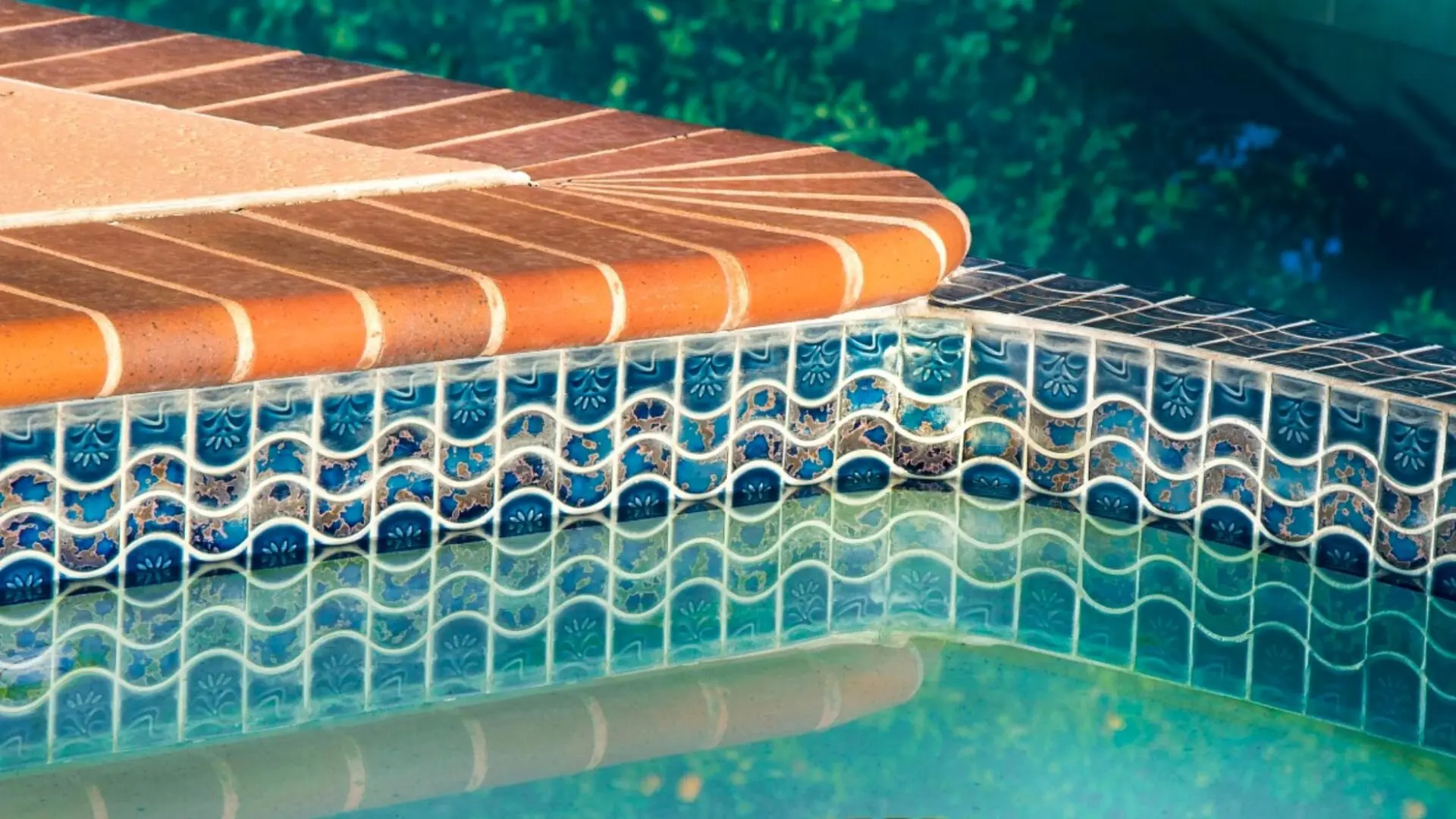
Ensure You Prepare Your Surface
Ensure the pool surface is clean, level, and free from debris or old tiles. Repair any cracks or imperfections in the surface.
Apply Your Adhesive
Apply a high-quality pool tile adhesive to the surface using the recommended trowel size. Follow the manufacturer’s instructions for proper application.
Install Your New Tiles
Carefully place each tile onto the adhesive, ensuring proper alignment and spacing. Use tile spacers to maintain consistent gaps between tiles.
Grouting Your Pool Tiles
Once the adhesive has cured, remove the spacers and apply pool-grade grout to fill the gaps between the tiles. Clean off any excess grout from the tile surfaces.
Apply Your Sealant
After the grout has dried, apply a suitable tile sealant to protect the tiles from water penetration and stains. Follow the manufacturer’s instructions for proper application and curing.
Repairing Or Replacing Damaged Pool Tiles
Over time, pool tiles may become damaged and require repair or replacement. Here are some key steps to address this issue:
Identity Any Damage
Inspect the pool tiles regularly to identify any signs of damage, such as cracks, chips, or loose tiles. Addressing the issue promptly can prevent further damage and potential safety hazards.
Removing Damaged Tiles
Carefully remove the damaged tiles using the appropriate tools. Take caution not to damage adjacent tiles during the removal process.
Installing Replacement Pool Tiles
Apply adhesive to the back of the new tile and carefully place it in the designated area. Align the new tile with the surrounding tiles for a seamless appearance.
Grouting And Sealing
Once the adhesive has cured, apply grout to fill the gaps between the tiles. Clean off excess grout and use a suitable sealant to protect the repaired area.
Make Your Pool A Haven With The Right Pool Tiles
For many homeowners, selecting pool tiles is essential for many reasons. Besides ensuring safety and appearance, their maintenance and chemical resistance are also vital factors.
If you are looking to install new pool tiles in your pool area, and need a professional team, look no further than The Pool Co. We can help you find the perfect slip-resistance pool tile that creates the pool environment of your dreams. We also offer many other services, including pool renovations and pool maintenance, so don’t hesitate to reach out to us.
That’s all for this guide. Good luck picking suitable high-quality tiles!

